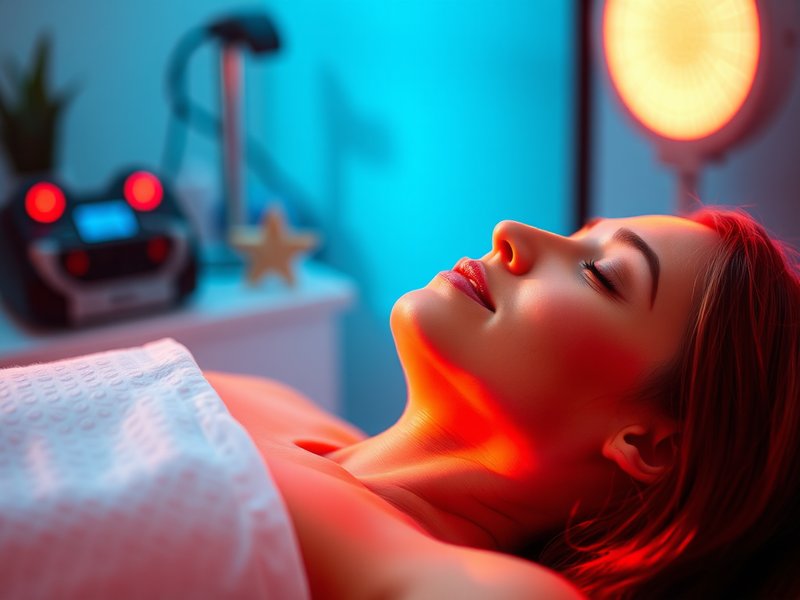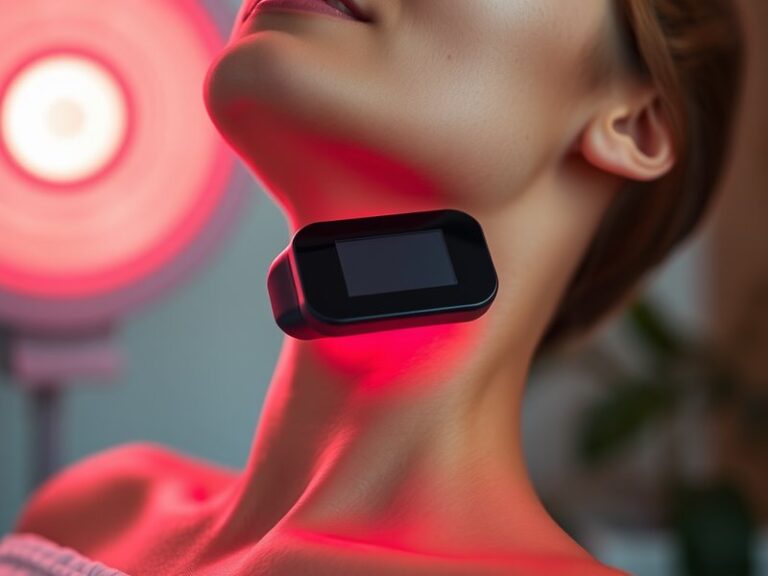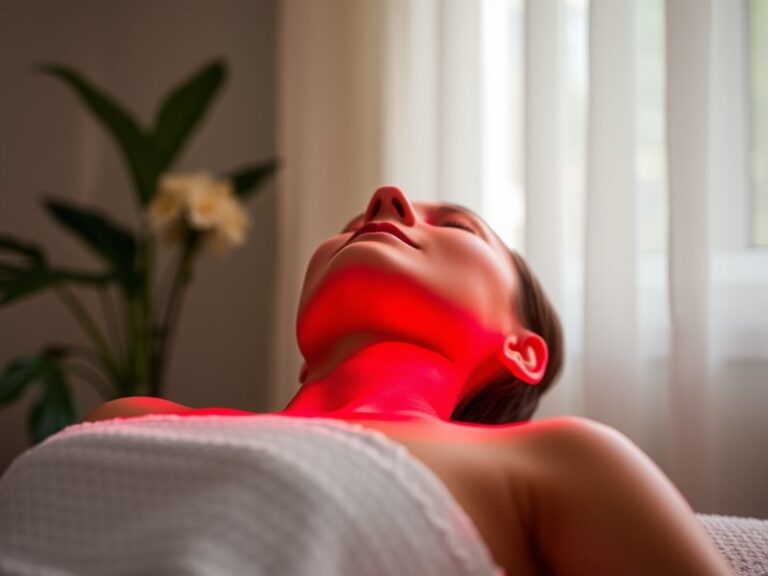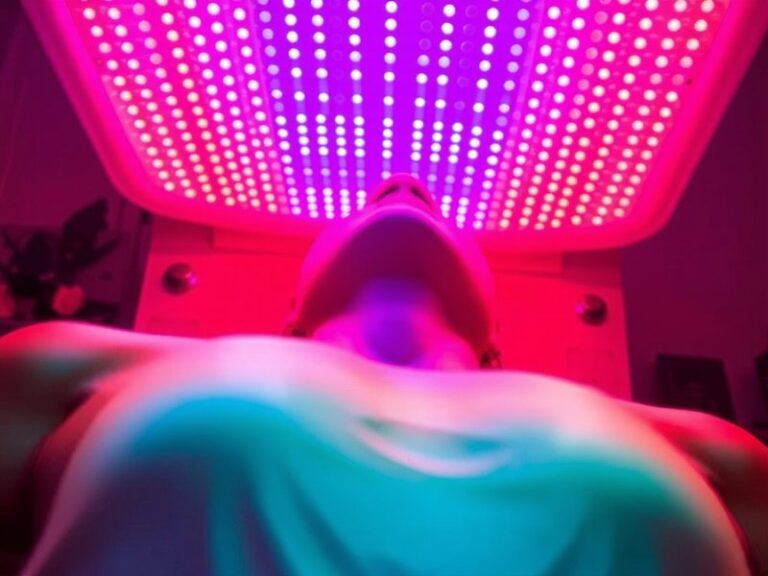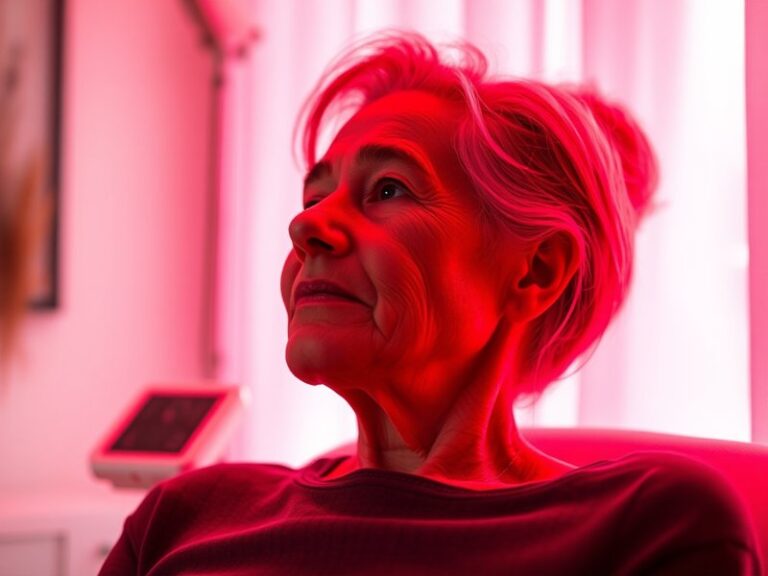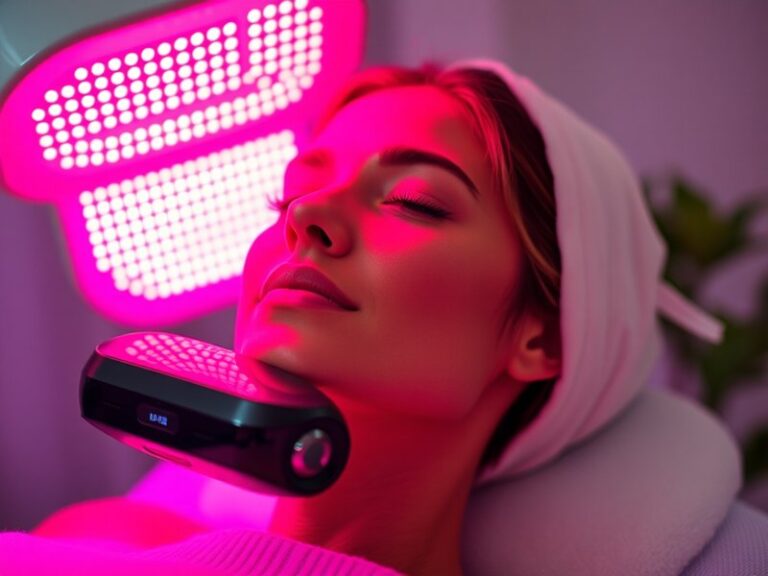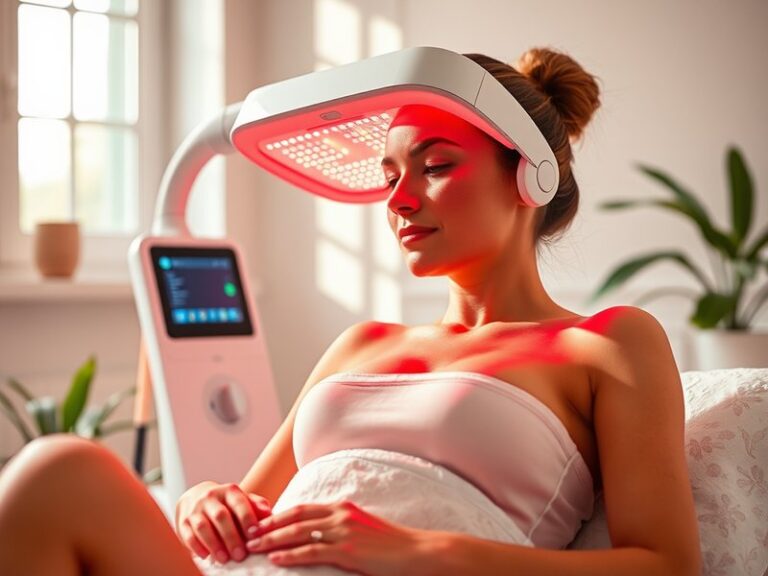What Cream To Use With Red Light Therapy?
What Cream To Use With Red Light Therapy?
Have you ever wondered what the best kind of cream to apply during red light therapy is?
This article will explore the types of creams that can enhance your red light therapy experience, how they work in synergy with the treatment, the benefits they offer, and key considerations you should keep in mind.
Key Takeaways
- Choosing the right cream can significantly enhance the effectiveness of red light therapy.
- Look for creams that contain natural ingredients and promote hydration and healing.
- Always perform a patch test before applying any new cream to avoid adverse reactions.
What is Red Light Therapy?
Red light therapy (RLT) is a non-invasive treatment that uses low-wavelength red light to stimulate cellular regeneration. It has been widely studied for its ability to improve skin health, reduce inflammation, and promote healing.
Red light therapy works by penetrating the skin to boost the production of ATP (adenosine triphosphate), the energy currency of cells. This process not only aids in skin repair but also enhances overall skin tone and texture.
How Does Red Light Therapy Work?
During a session of RLT, a device emits specific wavelengths of light, typically between 600 to 650 nanometers. This light prompts the body’s natural healing processes. The presence of certain creams can further enhance this effect by providing the skin with additional nutrients.
Explore further in Do they work?
Read the latest on Duration of Red Light Therapy?
Types of Creams Used with RLT
When considering what cream to use during red light therapy, you should look for options such as:
- Hydrating creams
- Healing ointments
- Antioxidant-rich serums
What are the Benefits of Using Creams with Red Light Therapy?
Using creams in conjunction with red light therapy can amplify the treatment’s benefits. Here are important advantages you can expect:
Enhanced Absorption of Light
Some creams contain ingredients that can improve the skin’s absorption of the therapeutic red light, ensuring that the treatment penetrates deeper into the tissue for more effective results.
Boosted Healing Effects
Hydrating and healing creams can provide additional nutrients and moisture, promoting faster healing of any skin issues like acne, scars, or wrinkles that you may be targeting during treatment.
Improved Skin Barrier Function
Certain creams can strengthen the skin’s protective barrier, making it more resilient to environmental damage and aiding in post-treatment recovery.
Increased Comfort During Treatment
Using a soothing cream can lessen any discomfort associated with red light therapy by providing a soothing barrier between the skin and the light device.
Is it Possible to Use Creams Before and After Red Light Therapy?
It is indeed possible and often beneficial to use creams before and after red light therapy; however, timing and selection are crucial.
What are the Advantages of Using Creams?
- Pre-Therapy Advantages: Applying a suitable cream beforehand can enhance light absorption and nourish the skin for better results.
- Post-Therapy Advantages: Following treatment, a restorative cream helps to lock in moisture and nutrients, accelerating healing and recovery.
What are the Disadvantages of Using Creams?
- Potential for Irritation: Some creams may cause irritation or allergic reactions, particularly if they contain fragrances or harsh chemicals.
- Light Absorption Issues: Creams that are too thick or occlusive might hinder light penetration, reducing the effectiveness of the therapy.
What are the Things to Consider Before Using Creams with Red Light Therapy?
Before you dive into what creams to use, several key factors and precautions are essential to consider.
Ingredients Matter
Always choose creams with natural, beneficial ingredients like hyaluronic acid, aloe vera, vitamin C, and peptides. Avoid potential irritants like parabens and sulfates.
Patch Testing
To prevent adverse reactions, perform a patch test before using any new cream. Apply a small amount on a discreet area of skin and observe it for 24 hours.
Consultation with Professionals
Consulting with a skincare specialist or dermatologist can provide personalized recommendations suited to your skin type and needs.
What are the Alternatives to Using Creams with Red Light Therapy?
If using creams doesn’t align with your preferences or skin type, consider several alternatives that supplement your red light therapy regimen.
Oil-Based Serums
Natural oil-based serums can be an excellent alternative, providing hydration and beneficial nutrients without the heaviness of a cream.
Facial Masks
Using a nourishing facial mask post-therapy can offer intense hydration and deliver a concentrated dose of active ingredients to your skin.
Hydration via Supplements
Staying hydrated by drinking ample water or taking skin-nourishing supplements can support the benefits of red light therapy from within.
Conclusion: Is it Recommended to Use Creams with Red Light Therapy?
In conclusion, using creams with red light therapy is not only possible but can enhance the overall effectiveness and results of the treatment. The right choice of cream can bolster hydration, promote healing, and improve the experience significantly. However, it’s essential to choose products carefully, considering your unique skin needs.
Frequently Asked Questions
What type of cream is best during red light therapy?
The best type of cream includes hydrating and nutrient-rich options, such as those containing hyaluronic acid, vitamins, and antioxidants, which can complement red light therapy.
Can I apply makeup after red light therapy?
It is advisable to wait at least a few hours after therapy before applying makeup, as your skin may be more sensitive immediately afterward.
How often should I use creams with red light therapy?
You can use appropriate creams both before and after each red light therapy session, but always consult with a skincare professional for personalized advice.
Can all types of skin use creams with red light therapy?
Most skin types can benefit, but individuals with sensitive or reactive skin should perform patch tests and consult with a dermatologist for suitable recommendations.
Is it necessary to use creams for red light therapy to be effective?
While not strictly necessary, using the right creams can promote better results and enhance the overall effects of red light therapy.
